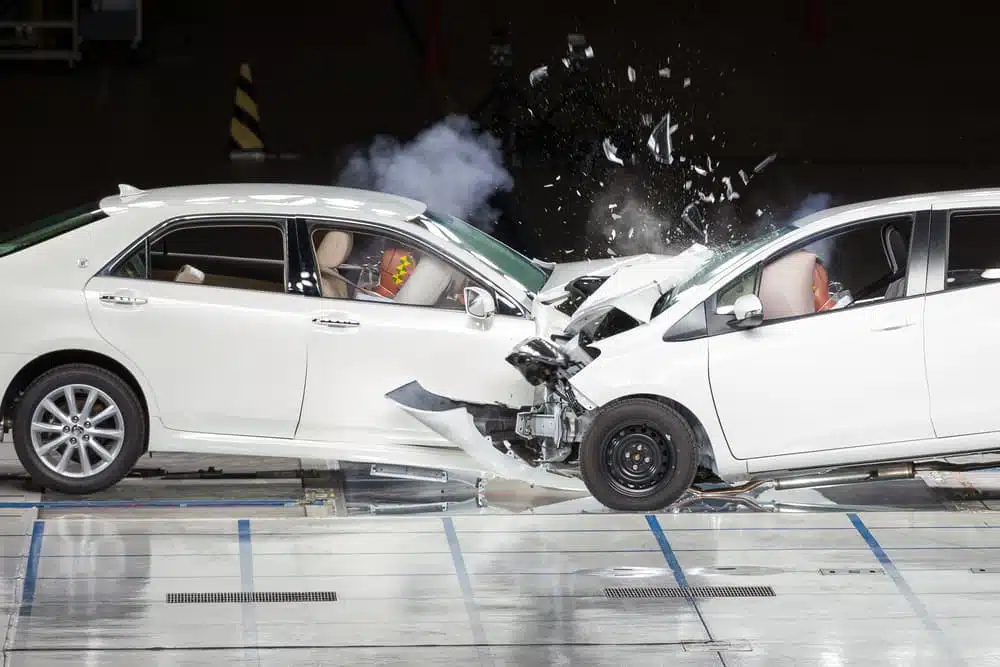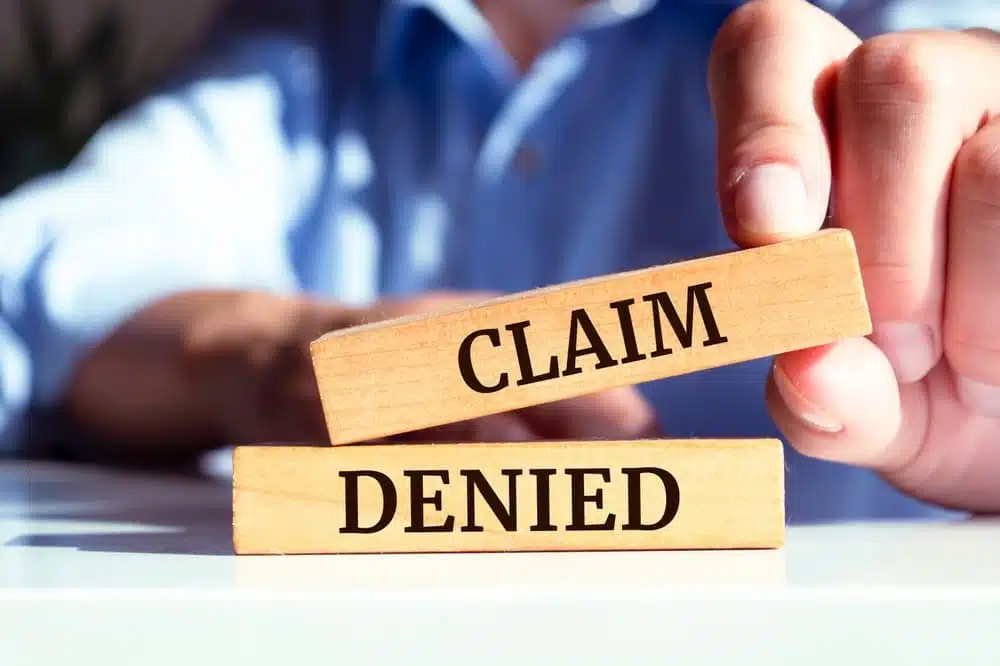
Head-on collisions are considered one of the most dangerous and deadly types of car accidents due to the severe forces involved and the potential for catastrophic injuries or fatalities. The severity of head-on collisions is attributed to the fact that the vehicles involved are essentially moving toward each other at their combined speeds, resulting in a substantial impact force.
While they may not be the most common type of crash, they often result in severe injuries and fatalities. In this blog post, we will explore the reasons why head-on collisions are so dangerous and what you can do if you or a loved one suffered injuries in this type of car accident.
If you or loved on has been injured in a head-on collision, reach to an experienced car accident lawyer near you.
How Common Are Head-On Collisions
According to the U.S. Department of Transportation Federal Highway Administration, head-on collisions are the most harmful event in about 14% of all U.S. traffic fatalities and 27% of all roadway departure fatalities.
A roadway departure, also called a lane departure, is a crash that occurs after a vehicle crosses an edge line or centerline or otherwise leaves the traveled way. Roadway departures often result in head-on collisions.
The Physics Behind Head-On Collisions
To understand why head-on collisions are so dangerous, it’s important to consider the physics involved. When two vehicles traveling in opposite directions collide head-on, the forces involved are substantial. Here are some key factors that make these accidents particularly perilous:
Combined Speeds
In a head-on collision, the vehicles involved are essentially moving toward each other at the combined speed of their original velocities. This means that the impact force can be significant even at relatively low speeds. If two cars traveling at 40 miles per hour collide head-on, the impact is equivalent to hitting a stationary object at 80 miles per hour. The higher the combined speed, the more devastating the crash.
Impact Force
The force generated during a head-on collision depends on the weight and speed of the vehicles involved. Heavier vehicles, such as trucks or SUVs, can produce more force during a collision, leading to more severe injuries. The force is transmitted through the vehicle’s structure, and the occupants inside experience the brunt of it.
Limited Crumple Zone
Modern vehicles are designed with crumple zones, which are areas of the car that deform and absorb energy during a collision. This helps to reduce the force experienced by the occupants. However, in a head-on collision, a limited crumple zone is available since the front of the vehicle takes the full impact. This lack of deformation space contributes to the severity of injuries.
Where Do Head-On Fatalities Most Often Occur

- Undivided roads (85%)
- Roads with posted speeds of 50 miles per hour or greater (70%)
- Roads in rural areas (65%)
- Curves in roads (31%)
- Wet or icy roads (22%)
Types of Injuries in Head-On Collisions
Head-on collisions can result in a wide range of injuries, many of which can be life-threatening or life-altering. Many are fatal. Here are some common types of injuries associated with these accidents:
Traumatic Brain Injuries (TBIs)
The force of impact in a head-on collision can cause the head to jerk forward and backward, leading to traumatic brain injuries. TBIs can range from mild concussions to severe brain damage, and they often require extensive medical treatment and rehabilitation.
Spinal Cord Injuries
The sudden and violent motion of a head-on collision can lead to spinal cord injuries. These injuries can result in paralysis, loss of sensation, and a lifetime of physical limitations.
Broken Bones
The impact of a head-on collision can cause bones to break, especially in the arms, legs, and ribs. Fractured bones can be excruciatingly painful and may require surgeries, casts, or other forms of treatment.
Internal Injuries
The force of a head-on collision can cause internal injuries to organs such as the liver, spleen, and lungs. These injuries may not be immediately apparent but can lead to severe complications if left untreated.
Whiplash
Whiplash is a common injury in head-on collisions, resulting from the rapid back-and-forth motion of the head and neck. It can lead to chronic neck pain, headaches, and other long-lasting symptoms.
Contributing Factors to Head-On Collisions
Several factors can contribute to head-on collisions:
Distracted Driving
One of the leading causes of head-on collisions is distracted driving. When drivers take their eyes off the road or divert their attention from driving, they can easily drift into oncoming traffic, leading to a catastrophic collision.
Impaired Driving
Driving under the influence of alcohol or drugs significantly impairs a driver’s ability to stay in their lane and react to potential hazards. Impaired drivers are more likely to cross the centerline and cause head-on collisions.
Fatigue
Fatigued drivers may have slower reaction times and impaired judgment, increasing the likelihood of veering into oncoming traffic. It’s crucial to get enough rest before embarking on a long journey to avoid fatigue-related accidents.
Poor Road Conditions
Icy, wet, or poorly maintained roads can make it challenging to maintain control of a vehicle. Slippery surfaces can cause vehicles to skid and cross into oncoming traffic.
Who May Be Held Liable in a Head-On Collision?

Negligent Drivers
The most common party held liable in a head-on collision is the driver, who acted negligently and caused the accident. This could include being distracted, speeding, driving under the influence, or failing to yield the right-of-way. Determining liability typically involves examining the actions and behaviors of both drivers involved.
Reckless or Aggressive Drivers
Drivers who engage in reckless or aggressive behaviors such as road rage, aggressive overtaking, or excessive speeding may be held liable for causing a head-on collision. Their intentional or willful misconduct can result in legal consequences.
Mechanical Failures
Sometimes, mechanical failures or defects in a vehicle can lead to a head-on collision. In such cases, the manufacturer or maintenance service provider may be held liable for negligence if it can be proven that the vehicle’s mechanical issue directly contributed to the accident.
Poor Road Conditions
If the road conditions were a significant factor in the head-on collision, the government agency responsible for maintaining the road may be liable. This could include cases involving inadequate signage, poorly maintained roads, or hazardous road conditions due to weather or construction.
Commercial Entities
If the head-on collision involves a commercial vehicle, such as a truck or delivery van, the company employing the driver may share liability. This could be due to issues with driver training, maintenance, or company policies that may have contributed to the accident.
Seeking Legal Help After a Head-On Collision

Allen L. Rothenberg, Esq., Car Accident Lawyer
Head-on collisions are exceptionally dangerous due to the physics involved and the severe injuries they can cause. If you or a loved one suffered injuries in a head-on collision, it’s essential to seek legal help promptly.
Head-on collisions often result in extensive medical bills, lost wages or income, and pain and suffering. An experienced personal injury attorney can help you pursue compensation for your injuries and hold the responsible party accountable.
At Rothenberg Law Firm LLP, we have a team of skilled car accident attorneys who focus our practice in personal injury cases, including those arising from head-on collisions. We understand the complexities of these cases and will work tirelessly to ensure you receive the compensation you deserve.
If you or a loved one were involved in a head-on collision, don’t hesitate to seek legal assistance to protect your rights and pursue the compensation you need for your recovery. Contact us today at (800) 624-8888 or through our online form for a free consultation.



